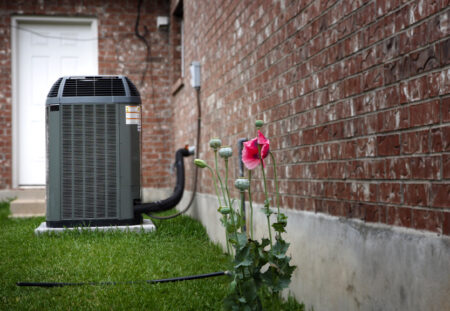
Seasonal energy efficiency ratio (SEER) is a tool for consumers that indicates the efficiency of a cooling system. The U.S. requires all products that use energy or water to have an Energy Guide label. This is a big yellow sticker on the unit. This label is where you’ll find the SEER rating for air conditioners and heat pumps along with other energy-related information.
What Is SEER?
SEER is a rating system that measures efficiency over a full cooling season. The higher the number, the more efficient the system is and the cheaper it will be to run over that period.
The U.S. Department of Energy (DOE) and the American Society of Heating, Refrigerating, and Air-Conditioning Engineers (ASHRAE) developed SEER as a joint project. The DOE introduced SEER in 1979 and continues to regulate its use. The Air Conditioning, Heating, and Refrigeration Institute (AHRI) and American National Standards Institute (ANSI) standardize it, and ASHRAE maintains it.
In 1992, the DOE established SEER minimums. The original minimum was 10. Over the years, the DOE has increased the minimum to reflect technological innovations. The most recent update went into effect January 1, 2023. Brands cannot sell units that operate below the minimum.
What Is SEER2?
SEER2 is a revision of the SEER system that accounts for the static air pressure of the air handler. This change better reflects the energy consumption of central air conditioners. Starting in 2023, manufacturers must now include the SEER2 and SEER rating. Eventually, the DOE will discontinue using SEER and use SEER2 exclusively.
SEER2 is similar to SEER in that the higher the number, the more efficient the system is. Consumers should note that you cannot compare SEER to SEER2.
The SEER and SEER2 Ratings for Utah
The DOE sets SEER and SEER2 minimums based on three regions: North, South, and Southeast. Utah is included in the North region. Central ACs and packaged systems must have a minimum SEER of 14 and a minimum SEER2 of 13.4. Heat pumps must have a minimum SEER of 15 and a minimum SEER2 of 14.3.
As a homeowner in the North region, it’s important to know that this region has a grandfather allowance. New ACs and heat pumps must meet the updated standards. Preexisting units only need to meet the pre-2023 standards. This is not the case in the South and Southeast. In fact, manufacturers are moving old stock from those regions to states like Utah for sale and installation.
Is It Worth Paying More for a Higher SEER?
It’s generally true that an AC with a higher SEER will be more expensive. Whether that additional cost is worth it is something you should discuss with your HVAC technician. The question you must answer is whether the long-term savings will be greater than the added cost. You may also have to factor in energy incentives that offset your initial investment.
What Is ENERGY STAR?
ENERGY STAR is an Environmental Protection Agency (EPA) program that certifies appliances. If an appliance has the ENERGY STAR label, a consumer knows that it’s among the most energy-efficient solutions in its class. It may also make you eligible for tax credits and rebates. Whether an AC or heat pump earns certification is largely based on its SEER/SEER2 ratings.
What About EER?
The energy efficiency ratio (EER) is also a measure of cooling efficiency. The difference is that it measures efficiency at peak usage. For Utah homeowners, SEER is far more informative in almost all cases. EER would be more useful if you were running your AC at 95 degrees Fahrenheit most of the time.
What About HSPF?
Heating seasonal performance factor (HSPF) is similar to SEER. The difference is that it measures efficiency over a heating season. HSPF and HSPF2 are only relevant to heat pumps and not ACs.
Your Local Cooling Pros in American Fork
Gunthers Heating, Cooling, and Plumbing is a locally owned and operated company that’s served American Fork since 1910. Our HVAC team specializes in all types of ductless and ducted heating and cooling systems, ask us about our AC maintenance solutions. We also specialize in indoor air quality, including humidifiers. Our plumbers install and service boilers.
We also perform plumbing repairs, including fixing leaks and cleaning drains. You can also count on them to install tank and tankless water heaters, garbage disposals, water softeners, toilets, faucets, and more. We specialize in sheet metal fabrication that includes HVAC ductwork.
Call today to learn more about these services or to schedule an appointment.

